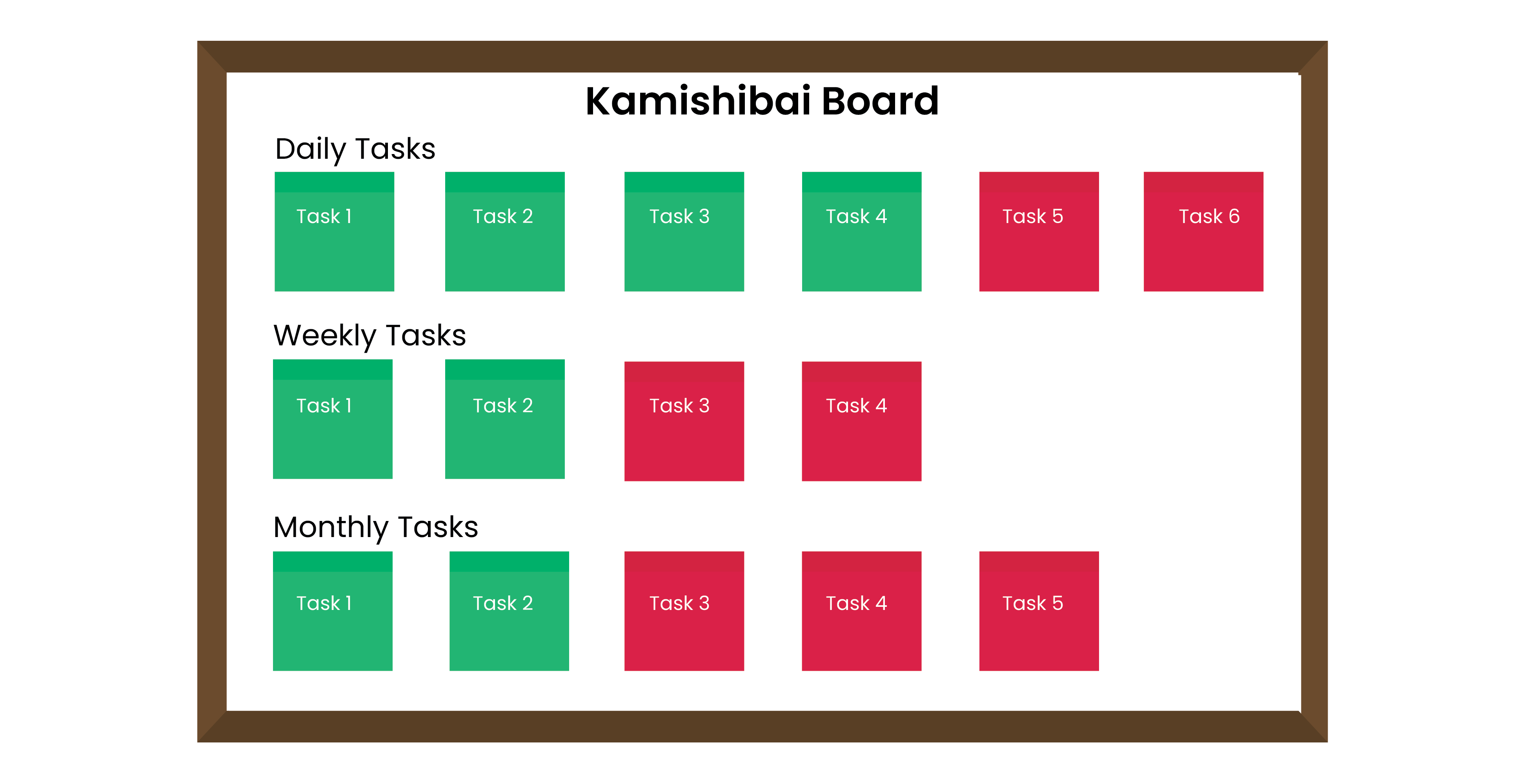Introduction and Background:
Kamishibai (pronounced ka-MEE-she-bye), a methodology originating from Japan, combines storytelling and visual management to revolutionize auditing processes. Inspired by traditional Japanese street theater, Kamishibai harnesses the power of visuals and the concept of "gemba" to conduct audits at the workplace. Organizations can streamline their auditing efforts by employing cards on boards and driving compliance, transparency, and continuous improvement.

Benefits of Using Kamishibai as an Audit Methodology:
1. Visual Management:
Kamishibai's visual nature facilitates clear communication and understanding. Auditors use visually appealing cards or boards, prominently displayed at workstations, to represent audit items. This visual representation provides a quick overview of audit status, identifies gaps, and fosters a sense of ownership and accountability throughout the organization. Visual management promotes transparency and facilitates ongoing improvement efforts.
2. Standardized Audits:
Kamishibai promotes standardization in auditing processes. Audit cards contain predefined questions or tasks that auditors must perform at regular intervals. This standardized approach ensures consistency in audit execution, reduces variability, and enhances the accuracy of data collection. By establishing a reliable benchmark, organizations can effectively evaluate performance, identify trends, and implement timely corrective actions.

3. Real-time Issue Identification:
With Kamishibai, audits are conducted frequently and in a structured manner. This proactive approach enables organizations to identify issues in real time and take immediate action, preventing them from escalating into major problems. The visual boards make it easy to spot deviations, anomalies, or non-compliance, facilitating prompt corrective measures and continuous improvement. Early issue detection saves valuable time, resources, and mitigates potential risks.
4. Engaging and Empowering Employees:
Kamishibai actively engages employees in the auditing process. It encourages cross-functional collaboration and empowers frontline workers to take ownership of their tasks and processes. By involving employees in identifying potential issues and finding solutions, Kamishibai fosters a quality and continuous improvement culture. Employees become proactive contributors to the audit process, enhancing overall efficiency and effectiveness.
Kamishibai, the fusion of storytelling, visual management, and auditing, offers organizations a powerful methodology to optimize their audit processes. Kamishibai drives transparency, accountability, and a culture of excellence through visual representations, standardized audits, and real-time issue identification. By implementing Kamishibai, organizations can achieve enhanced operational efficiency, compliance, and customer satisfaction. However, successful implementation requires careful planning, training, and leadership support. Embracing Kamishibai as an audit methodology empowers organizations to navigate the dynamic business landscape with streamlined audits and continuous improvement at the forefront of their operations.



-1.png)

